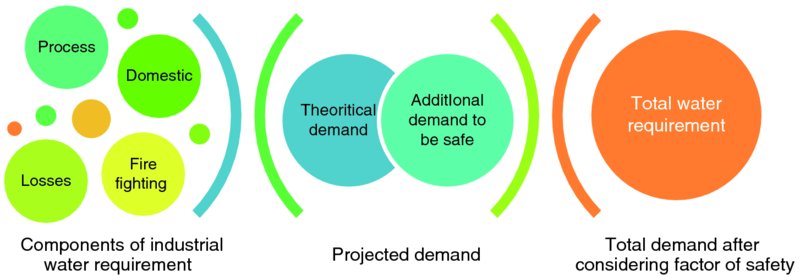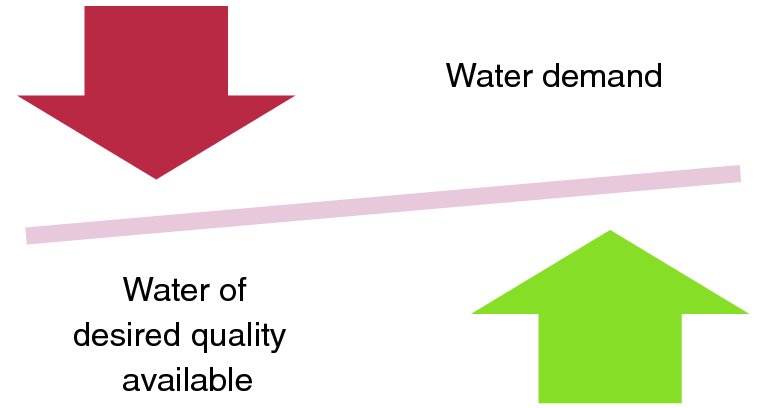5 Sustainable Industrial Water Use and Wastewater Treatment
Conventionally all engineering practices assume a factor of safety while designing an infrastructure, machine or engineering solution. Most of the time the assumed factor ranges between two and three. The water industry is not an exception. Hence, to avoid losses it forecasts greater demand than is really required. The industry usually assumes greater losses and multiplies the final water requirement by the factor of safety to arrive at the total water demand (Figure 5.1).

Figure 5.1 Components of calculating water demand.
As water is a limited resource, the quantity available usually diminishes as the number of competitors increases (Figure 5.2). Furthermore, the amount of water within a given locality may also diminish due to climate change and diminishing quality.

Figure 5.2 Imbalance between water availability and demand.
Precise information on effluent characteristics is an essential factor in the design of suitable treatment facilities. In theory, design and operation is governed by the relevant microbial/chemical kinetics but, in reality, design and operation are mainly based on rules of thumb and the experience of the people involved. Wastewater composition varies depending on the raw materials, machinery ...